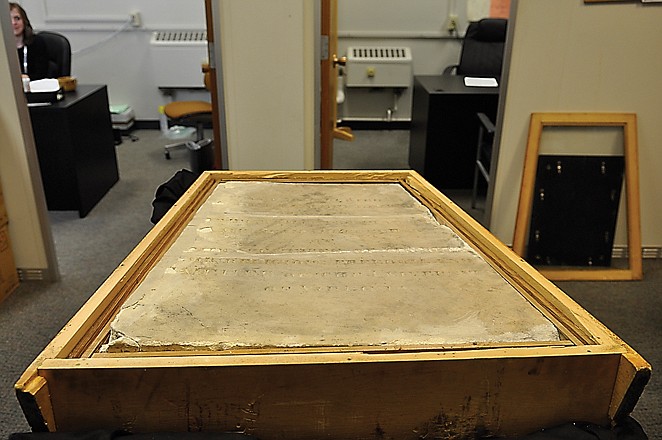COLUMBIA, Mo. (AP) - A marble slab from the original tombstone of former President Thomas Jefferson, which has been stored for nearly 130 years at the University of Missouri-Columbia, will be sent to a laboratory that serves the Smithsonian Institution for restoration work, university officials said.
Jefferson's original tombstone was at his Virginia home of Monticello, but it was shipped to Missouri by Jefferson's family in the 19th century because of concerns about vandalism from souvenir seekers. The tombstone was dedicated in 1885 at the University of Missouri, which was the first public university in the Louisiana Purchase Territory.
The Smithsonian will receive a marble slab that bears the epitaph Jefferson wanted on his tombstone. The piece has been stored for more than 100 years because of concerns about weather and vandalism, The Columbia Tribune reported Tuesday (http://bit.ly/R7Uquq ).
It was first housed at Academic Hall and was salvaged after that building burned in 1892. It's been stored in Jesse Hall since 1895.
After Carol Grissom, a senior objects conservator at the Museum Conservation Institute, a research lab that serves the Smithsonian visited the university this fall, she decided to take on the restoration project.
"It's irresistible," Grissom said in a statement. "Thomas Jefferson himself wrote what he wanted written on the stone."
Jefferson's inscription, found by relatives in his notes after he died, identifies him as the "author of the Declaration of American Independence" and as the "father of the University of Virginia."
"Scholars find it interesting that he left out the fact he was president, among other accomplishments," Grissom said.
Missouri is working to determine the cost of sending the stone to Washington, D.C., where the Smithsonian will restore it without charge.
The restoration will involve Grissom and her team removing the marble slate from a wooden box it's been sitting in since the 1890s and analyzing it to determine why the slab is deteriorating. They will use a scanning electron microscope and other analyses to examine the stone.
John Murray, the assistant director of business services who manages Jesse Hall, envisions architectural students designing a case to display the piece once the restoration is done.

